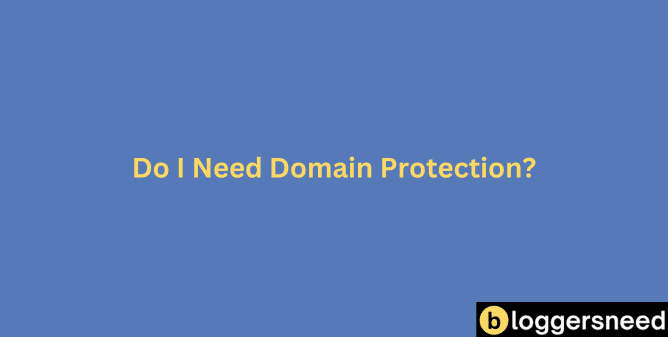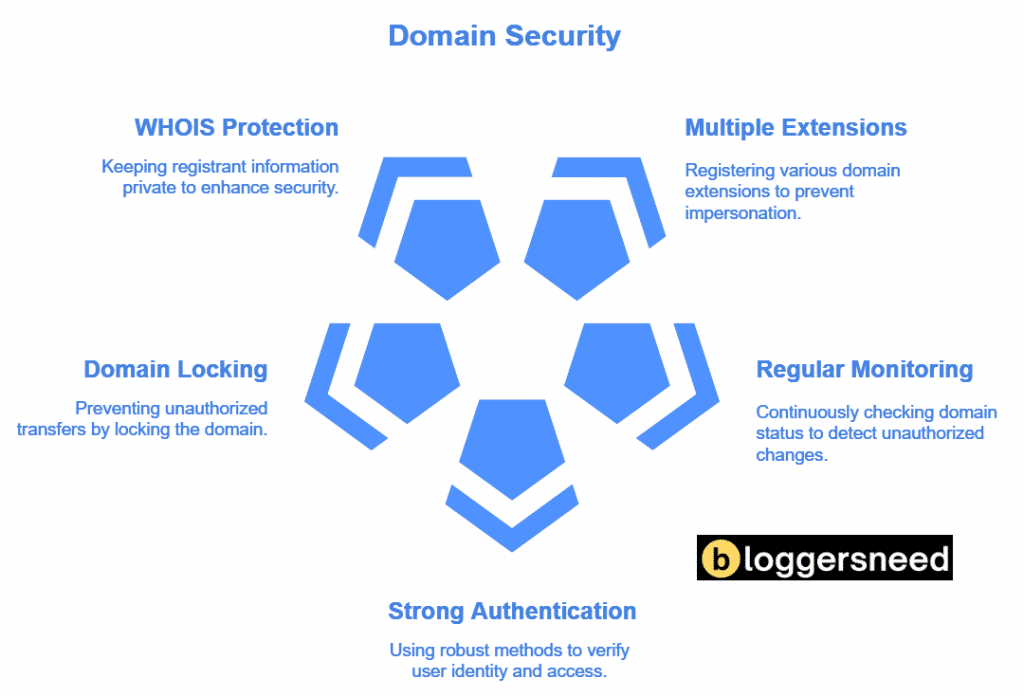
You need domain protection to safeguard your online presence from unauthorized access and misuse. This involves implementing strategies like defensive domain registration and domain monitoring, as well as using data encryption to mitigate common threats to domain integrity.
Domain protection guarantees the availability of your valuable online addresses and is essential for maintaining control over domain ownership. It protects your personal contact information, reduces the risk of unauthorized access and domain theft, and provides renewal reminders to prevent accidental domain expiration. By implementing domain protection, you can guarantee your website remains secure and trustworthy for your customers; understanding its benefits and best practices can further enhance your online security.
Table of Contents
What is Domain Protection?
Domain protection refers to the practice of safeguarding a domain or a specific area of knowledge from unauthorized access, misuse, or manipulation. It includes key components such as domain privacy, DNS monitoring, and data encryption, which collectively mitigate risks like domain hijacking and phishing attacks. By implementing robust security practices, website owners can preserve their online identity and brand reputation, ensuring the integrity and availability of their digital assets in an increasingly threatening cyber landscape.
What Are the Benefits of Implementing Domain Protection?
Implementing domain protection offers several key benefits.
- Protects your domain ownership: Your personal contact information remains private, reducing the risk of unauthorized access and domain theft.
- Provides renewal reminders: Prevents accidental domain expiration and potential loss of your online presence.
- Includes phishing prevention measures: Blocks spam messages and hiding your contact details from public directories.
- Offers robust security features: when selecting a registrar, including two-factor authentication and defensive domain registration.
What Are the Risks of Implementing Domain Protection?
Understanding the risks associated with domain protection is crucial for maintaining a secure online presence.
Listed below are the risks of implementing domain protection.
- Incurring Costs: Applying domain protection measures can incur additional expenses for premium registrars, domain locking, and monitoring services.
- Increasing Complexity: Configuring and managing protection across multiple domains can increase complexity, risking misconfiguration.
- Generating False Positives: Domain monitoring services may generate unnecessary alerts, leading to wasted investigation efforts.
- Creating Registrar Dependence: Relying on one registrar creates a single point of failure.
- Exposing to Expiration Risks: Domains can still expire if renewal payments or contact info is incorrect.
- Requiring Legal Considerations: Defensive registrations may infringe on others’ rights, requiring legal counsel.
What Are the Top Best Practices for Securing Your Domain Name?
Securing your domain name is essential in today’s digital landscape, and several best practices can help protect your online identity.
- Register multiple domain extensions: Purchase other domain extensions of your domain name to prevent brand dilution and unauthorized use of similar domain names.
- Regularly monitor your domains: Monitor domain name regularly for suspicious activities and unauthorized changes to guarantee immediate action against potential threats.
- Implement strong authentication: Use authentication methods like two-factor authentication (2FA) or multi-factor authentication (MFA) for your domain registrar account.
- Enable domain locking: Lock your domain to prevent unauthorized transfers or changes.
- Protect your WHOIS information: Use domain privacy services to keep personal and sensitive information secure.
- Renew your domains: Renewing domain in advance to avoid expiration and loss of control.

How Can I Integrate Domain Protection with Other Security Measures?
To integrate domain protection with other security measures, you need to contemplate an all-encompassing approach that covers all aspects of your online presence.
This involves implementing domain security strategies that include using domain protection tools, such as DNS monitoring and data encryption, to safeguard against unauthorized access and malicious activities.
Additionally, make certain that your registrar has robust security protocols in place, such as registrar lock and two-factor authentication, to prevent domain hijacking.
A multi-layered protection strategy should also include DNS security measures like DNSSEC to prevent DNS spoofing.
By combining these measures, you can create an extensive security framework that protects your domain and maintains the integrity of your online presence.
This guarantees that your digital assets remain secure and trustworthy for your users.
What Legal Considerations Should I Be Aware of Regarding Domain Protection?
When implementing domain protection measures, you should also consider the legal implications of domain theft and hijacking. This includes understanding trademark infringement, cybersquatting laws, and how to handle domain disputes.
Legal compliance is vital to protect your intellectual property and prevent unauthorized use of your domain name.
Cybersquatting laws, such as the Uniform Domain-Name Dispute-Resolution Policy (UDRP), provide a framework for resolving domain disputes. Registering your trademark helps prevent unauthorized use of your brand name or logo.
Regular monitoring and legal action against domain hijacking and typosquatting are fundamental to safeguard your online presence. By being aware of these legal considerations, you can guarantee your domain protection measures are both effective and compliant with legal standards.
What is Domain Name Privacy?
Domain name privacy is an essential security measure that shields your personal information associated with a domain name from public view.
When you register a domain, your contact details are typically listed in the WHOIS database, a public directory that anyone can access. This exposes your personal information, such as your name, address, and phone number, to potential spammers, hackers, and identity thieves.
Domain name privacy protection replaces your personal information with that of your domain registrar, ensuring that your personal details remain private. This service helps maintain online anonymity and data protection, reducing the risk of spam and unwanted solicitations.
Affiliate Disclosure: Some of the links in this post are affiliate links, which means I may earn a small commission if you make a purchase through those links. This comes at no extra cost to you. Thank you for your support!
